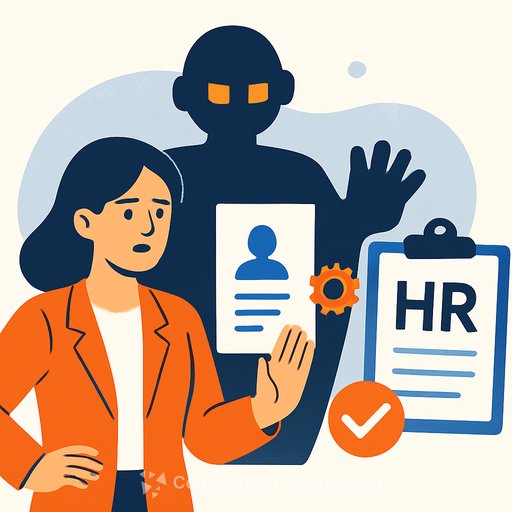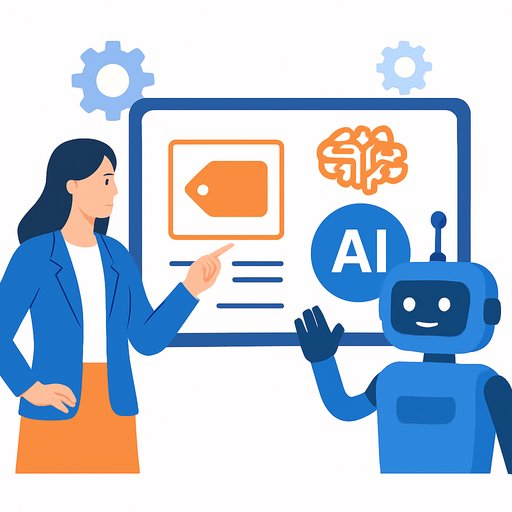Shadow AI in HR Is Here - And It's Making Calls You Never Approved
Worried about staff using tools you never signed off? That concern just moved into HR. Quiet AI workflows are rewriting reviews, guiding hiring choices, and shaping pay discussions before they ever touch your HCM.
This isn't a future problem. It's already embedded in everyday work. And if you lead a team, a function, or an entire org, it's hitting compliance, fairness, and trust whether you've seen it or not.
What Shadow HR Looks Like Right Now
- Managers running "edge" systems: Side spreadsheets for performance notes, pay changes, absence logs. AI copilots summarizing coaching chats and 1:1s into emails or personal drives. No controls. No audit trail.
- Unofficial engagement and wellbeing: Google Forms pulse checks. Slack polls. A wellbeing bot collecting mood scores. You end up with two datasets that rarely match: the official one and the one employees actually use.
- Generic AI with sensitive data: Employees paste performance notes, pay figures, or health info into public AI tools for a quick answer. KPMG found many workers admit uploading company info to public systems (source).
- AI inside collaboration tools: Built-in features in Microsoft 365, Slack, and Zoom auto-transcribe, summarize, and create action items. Those artifacts can store sensitive HR content in places nobody checked.
Why It's Spreading
- Speed wins: 71% use unapproved AI tools, 51% weekly, reclaiming about 7.75 hours. People choose the fastest path.
- Clunky official systems: Slow screens and admin-heavy flows push managers to side routes.
- Thin guidance: Only 36% report meaningful AI training, and just 25% get direction from frontline managers. So people guess.
- Workarounds feel easier: If the sanctioned workflow doesn't fit the job, teams build their own.
The Risk Profile Leaders Can't Ignore
- Data privacy and compliance: HR data can harm people if mishandled. Public AI tools store inputs longer than users realize. HR also faces new obligations under the EU AI Act, which treats hiring and performance tools as high-risk and expects traceability (EU AI Act).
- Bias and legal exposure: Unvetted AI for reviews or résumé scoring can inject bias. If challenged, there's no clean record showing how judgments were formed.
- Data integrity and audits: Multiple "truths" form across spreadsheets, notes apps, and AI summaries. Your HCM lags reality, and audits fall apart.
- Governance blind spots: With 78% of organizations using AI somewhere, leaders ask, "Where did this data come from?" and get silence.
How to Regain Control (Without Killing Speed)
Lockdowns don't work. People will find shortcuts. Give them a faster, safer path and the shadows fade.
1) Set simple, practical rules for AI and people data
- Draw bright lines: Never paste grievance details, health info, pay data, or identity-linked data into public AI. Period.
- Be explicit: "Don't use copilot for performance reviews" is vague. Say, "Draft narratives in the HCM review form. Do not use public or consumer AI for review text."
- Offer the safe alternative: Name the approved tool and workflow for each scenario.
2) Build a sanctioned HR tech stack people actually want to use
- Make the HCM the default path: Shortcuts, templates, and AI assist inside the flow of work (Teams, Slack, mobile) so it never feels like a detour.
- Consolidate apps: Fewer point tools, fewer reasons to improvise.
- Decision trails by default: Every AI-touched decision should leave a timestamped, explainable record.
3) Raise AI literacy across managers and teams
- Keep it practical: What's safe to ask an AI? What never goes into public tools? When to stop and escalate.
- Train managers first: They set the tone. Give them short coaching guides and live examples.
- Refresh quarterly: Features change. So should the guardrails.
If you need structured, job-specific upskilling, explore manager and HR paths at Complete AI Training.
4) Improve visibility (without turning into Big Brother)
- Discover what's running: Use SaaS discovery to spot unapproved survey tools, résumé screeners, and browser extensions.
- Track AI features in existing apps: Log where transcripts, summaries, and action items are stored and who can access them.
- Communicate the "why": The goal is safety and fairness, not punishment.
5) Replace bans with enablement and rapid review
- Fast intake: Create a 48-hour review lane for new tools and experiments.
- Provide approved AI that feels quick: If your option is slower, shadow use wins.
- Publish the queue: Show requests, status, and decisions to build trust.
HCM as the Trusted, Governed Backbone
Shadow AI thrives when data is scattered across inboxes, personal notes, and random AI chats. Your HCM can anchor everything again: one record, consistent logic, and controlled access.
- Must-haves: HR data model that mirrors real work, native integrations with collaboration tools, version history on reviews, explainability for AI-assisted steps, and role-based access by default.
- Bias and quality checks: Test models inside the HCM, document evaluations, and tie decisions to sources you can defend.
- Pragmatic UX: If managers can do it in two clicks, they'll stop hacking around it.
A 30-Day Plan to Cut Shadow AI in Half
- Week 1: Publish "bright line" do/don't rules. Name the approved AI paths. Turn on logs for transcripts and summaries in collaboration tools.
- Week 2: Stand up a rapid review lane for new AI tools. Ship two manager-friendly templates inside your HCM (review draft, 1:1 summary).
- Week 3: Run 45-minute manager training. Share three real examples of safe vs unsafe AI usage. Post the recording.
- Week 4: App rationalization quick pass. Kill or replace two point tools with HCM features. Announce the wins with before/after time saved.
Metrics That Prove It's Working
- Time to complete reviews: Target a 30-40% reduction via in-flow templates and approved AI assist.
- Unapproved tool count: Track monthly trend from SaaS discovery. Goal: steady decline.
- Data consistency: Fewer discrepancies between HCM records and team trackers.
- Incident rate: Fewer privacy or access issues tied to transcripts, summaries, or uploads.
- Manager adoption: Percentage using the sanctioned AI flows for reviews and 1:1s.
Shine a Light, Don't Create More Shadows
Shadow AI isn't people misbehaving. It's people trying to work faster than the system allows. Give them clear rules, a smooth path, and AI that's available inside the official workflow. The shortcuts lose their appeal.
Want help building practical AI skills for HR and managers? Browse the latest AI courses or explore courses by job.
Your membership also unlocks:






